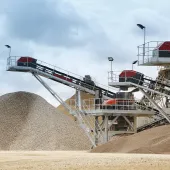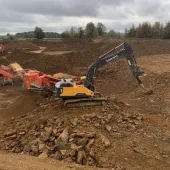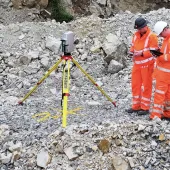Continuing concern over future aggregate supply

Latest MPA data suggests planning system could struggle to deal with any upsurge in planning applications
AGAINST the background of increased aggregate demand, the Mineral Products Association’s latest Annual Mineral Planning Survey (AMPS) report reveals signs that the planning system may have difficulty dealing with any resulting upsurge in planning applications.
The AMPS3 report is based on planning data provided by MPA members for the period up to the end of 2013. It shows that inertia in the planning system has not reduced and, unless the situation changes, at some point in the near future the options for maintaining a steady and adequate supply of aggregates could become seriously limited.
Key findings from AMPS3 include:
- The number of planning applications for new reserves remains low
- Despite this low number, determination times continue to rise
- Around 90% of all mineral applications are successful
- The greater proportion of new permissions granted since 2006 were for sites that were not allocated in mineral plans
- Very few significant aggregate producing areas have complete development frameworks in place
- Sand and gravel landbanks continue to decline, as a result of a 10-year average replenishment rate which is running at less than 50%.
The MPA believes that although its members have been cautious about submitting applications due to the economic and political uncertainties over recent years, the lack of completed mineral development frameworks has had a significant contributory effect, resulting in a significant decline in the tonnage of permitted aggregate reserves, particularly sand and gravel.
Even by the end of 2014, only 24 mineral planning authorities in England will have a complete mineral planning framework in place and the majority of these are not in significant mineral producing areas.
‘Without mineral plans and the allocations they contain, the costly process of submitting a planning application is a heightened commercial risk which only a limited number of operators are willing to take, unless they have no option,’ explained Nigel Jackson, chief executive of the MPA.
‘The plan-led system has always given added certainty to developers seeking to secure new aggregate reserves and the commercial decisions that go with it. But without more commitment from planning authorities to produce up-to-date, fully functional mineral plans, there is little incentive for operators to engage in the process. It is particularly unacceptable that none of the top three aggregate producing areas has a complete plan.’
The results of AMPS3 also indicate that, since 2006, MPA members have secured more planning permissions for sites that were not allocated in plans, than for sites that were allocated.
Mr Jackson continued: ‘That speaks volumes about the health of the plan-led system and is worrying as it weakens an already difficult situation, since those who engage with the plan-led system are paying twice for gathering data and putting sites into the system, only to see other sites getting permission at lower cost.
‘Either we have a plan-led system or we don’t – some are beginning to wonder why we need plans at all.’
The MPA says it seems likely that unless planning authorities and other decision-makers show more commitment to both the plan-led system and the presumption in favour of sustainable development, options for maintaining ‘steady and adequate supply’ will continue to narrow.
According to the Association, shortages of certain materials are already emerging in some high-demand areas, reflecting the lack of replenishment of sand and gravel reserves over the last 10 years, particularly in London and the South East.









